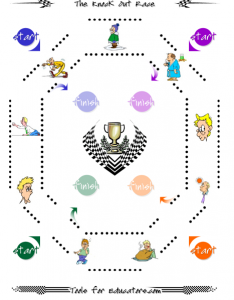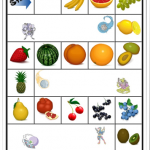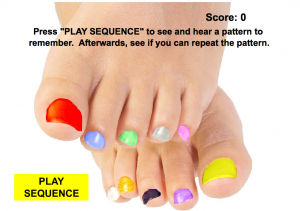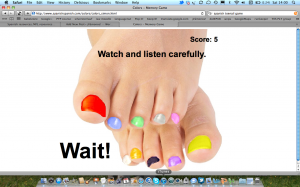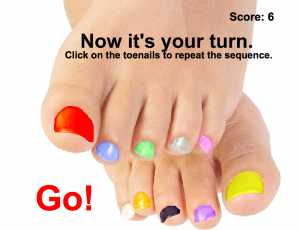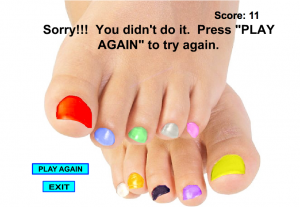 I came across this website earlier when searching for something else and thought I’d share it.
I came across this website earlier when searching for something else and thought I’d share it.
TuDiscoveryKids is the website for DiscoveryKids in Latin America and features all sorts of activities in Spanish linked to some of their programmes. I thought I’d highlight a few that you might find interesting!

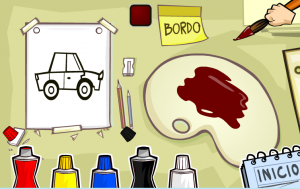
Juego de los colores
In this game, learners are given five tubes of paint and challenged to make the colour indicated – in the example above ‘bordo’ or burgundy. They squeeze the tubes to squirt the paint onto the palette, use the paintbrush to mix the colour and then paint the picture with the colour they mixed. Great for linking to colour blending in art.
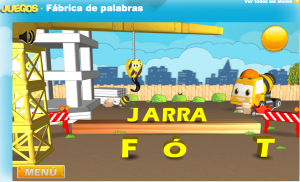
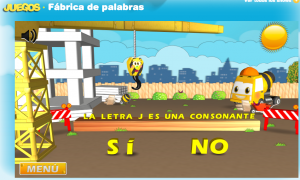
Fábrica de palabras
In this game, the crane challenges you to complete words by finding the missing consonants. The letters are then hoisted into the word and the crane repeats the sound and tells you if you’re correct. Then you are asked a yes/no question about consonants and vowels before being given another challenge. Great for looking at sound/letter link.
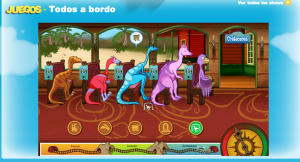
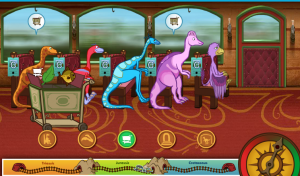 Todos a bordo
Todos a bordo
A game for dinosaur fans – and every class has them! The dinosaurs travel from Triassic to Jurassic to Cretaceous period and you are in charge of showing the dinosaurs to their seats, checking the tickets, feeding them and making sure that they get off in the correct period. As you go, you learn what type of food the dinosaurs eat and also in which time period they belong.
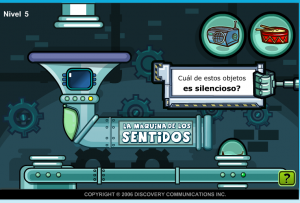
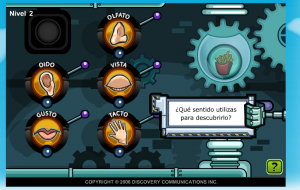
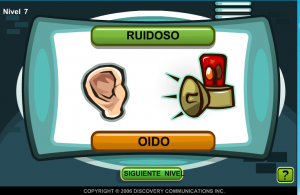
Conoce los 5 sentidos
This game links to your senses and asks you to choose from three objects that match a description e.g. Algo que tiene olor – something that smells or algo brillante – something shiny, and then decide which sense you would use to find out. As you play, you can learn the names of the objects from which you select, increase your knowledge of adjectives, and also consider your senses. You need to be careful as well not choose the correct sense for the adjective e.g. I had to find something ‘silencioso’ (silent) which was ‘una pluma’ (a feather), and this linked to ‘Oido’ – hearing rather than touch which you might have chosen had the adjective been ‘suave’ – soft. A fun link to science!
Each game also has links to other activities that have a link – for example, a video called Masa repugnante is suggested for this game which links to a video about an experiment to make a gooey yucky dough!
And there are also articles that would be of interest to educators and parents. This one links to the game above.
 Así se dice
Así se dice
This is a very simple game that wants you to indicate the animal that makes a certain sound by clicking on the animal. This is made harder by the animals being in silhouette on what looks like a sight chart! A fun game that could be played when discussing animals as well as when thinking about how languages have similarities and differences.
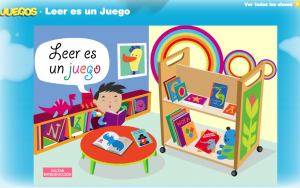

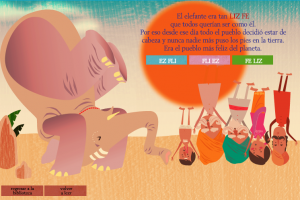
Leer es un juego
Our final example is accessed via the image of a library where you click on the book you’d like to read. The book is read to you but there is a missing word in the text. In the first example, there are three images from which to choose to fill the gap; in the second you have to choose the word that has the syllables correctly ordered. A fun way of keeping attention if you are using the story with the whole class as well as a little challenge for an individual reader.
I hope you’ll investigate the site more yourself – there are many more games and activities that merit attention. Perhaps I’ll come back with a follow up post in the future to explore further!


















